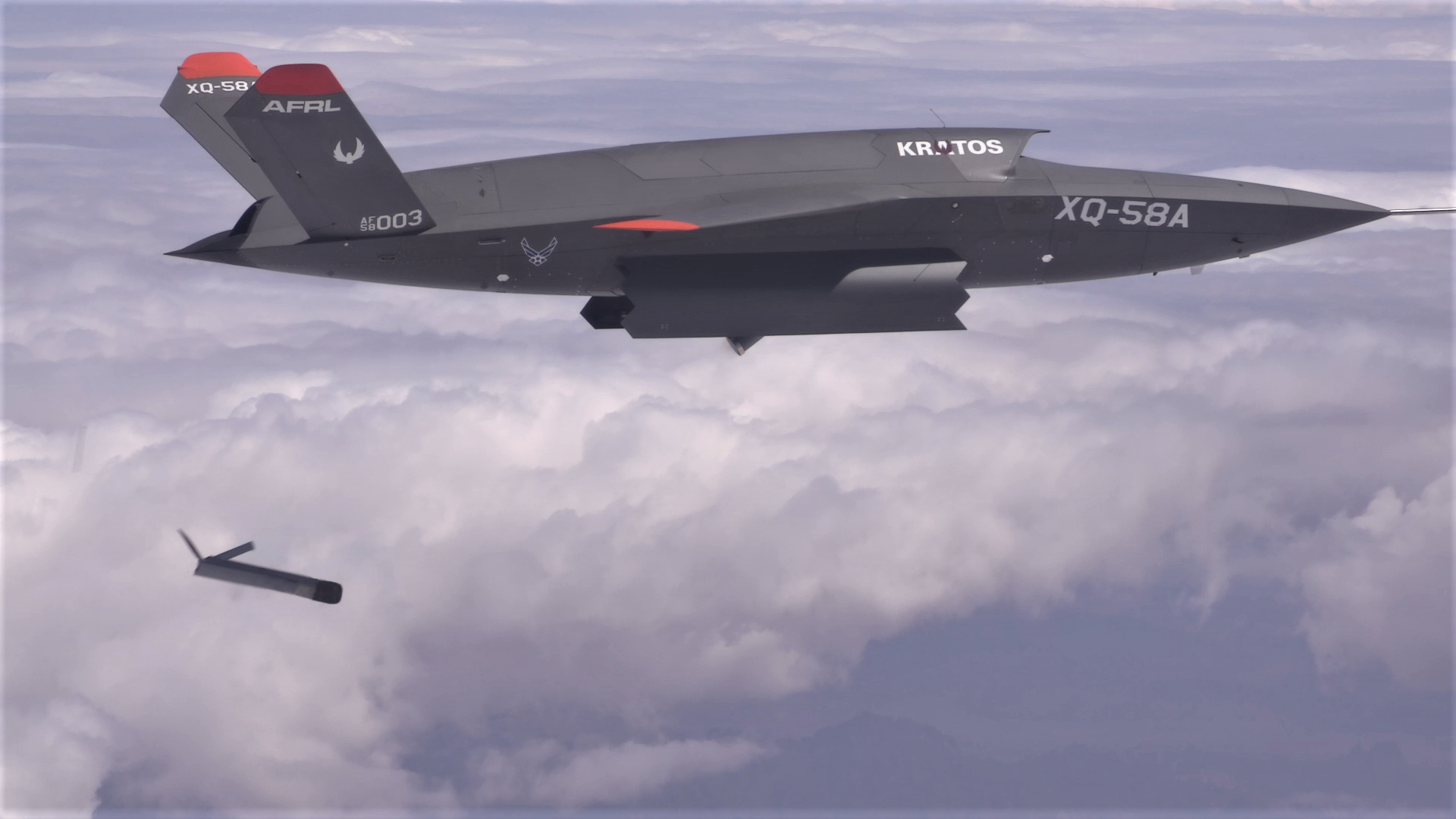
The Kratos XQ-58A Valkyrie releases a loitering munition from its weapons bay during a March 2021 flight. (Photo courtesy of Kratos.)
Updated 1/5/2023 at 7:24AM ET with comment from Kratos.
WASHINGTON — The US Navy has inked a $15 million contract with Kratos to buy two XQ-58A Valkyrie drones, the same aircraft the US Air Force started eyeing last year as it prepares for a next-generation drone competition in fiscal 2024.
The Dec. 30 Navy contract describes the drones as being equipped with “sensor and weapon system payloads to accomplish the penetrating affordable autonomous collaborative killer – portfolio objectives,” according to the daily announcements made by the Pentagon. The deal was awarded by Naval Air System Command (NAVAIR), the service’s lead procurement agency for manned and unmanned aircraft.
Steve Fendley, president of Kratos Unmanned Systems Division, told Breaking Defense in a statement on Wednesday the deal is his company’s “first major tactical contract” with the Navy.
Fendley also said think tanks such as the Mitchell Institute have recently outlined “the UAS application space and potential these tactical systems have to be game changers if taken advantage of today. It’s imperative that we don’t let better be the enemy of the good enough and begin fielding available technologies today that can satisfy the current need space.”
Breaking Defense has reached out to NAVAIR for comment about the contract.
Air Force Secretary Frank Kendall in September said his service had began “early conversations” with industry about an acquisition strategy for a “Collaborative Combat Aircraft” program, which would lead to fielding unmanned aircraft as part of the Next Generation Air Dominance family of systems. The competition for that next-generation drone could begin in FY24, Breaking Defense reported.
Subsequently the service’s 40th Flight Test Squadron at Eglin Air Force Base, Fla., announced in November that it had taken ownership of two Valkyrie drones and would begin regularly flying them.
Both the Air Force and Navy are engaged in programs to develop a sixth-generation fighter, known broadly as the Next-Generation Air Dominance (NGAD) effort, which are envisioned as cooperating with unmanned systems. However, the services have been clear they are not looking at an F-35 style joint program, with each service instead running their own, highly classified, efforts. The Navy’s focus is on developing a new fighter that can replace the F/A-18 E/F Block II fleet, a staple of the service’s strike fighter capacity.
Much of the Navy’s attention on unmanned aviation in recent years has been on its MQ-25A Stingray. The MQ-25 is an unmanned aircraft, launched from an aircraft carrier, that is controlled by a ground station and flies alongside manned strike fighter aircraft. (MQ-25 prime contractor Boeing has also been developing methods for allowing a P-8 or F/A-18 pilot to take command of the MQ-25 mid-flight if circumstance prevents the carrier-based handlers from doing so.)
However, the MQ-25’s primary mission is refueling manned strike fighters with a secondary focus on intelligence, reconnaissance and surveillance. What tasks the Air Force may have in mind for the future CCA is not as clear.








